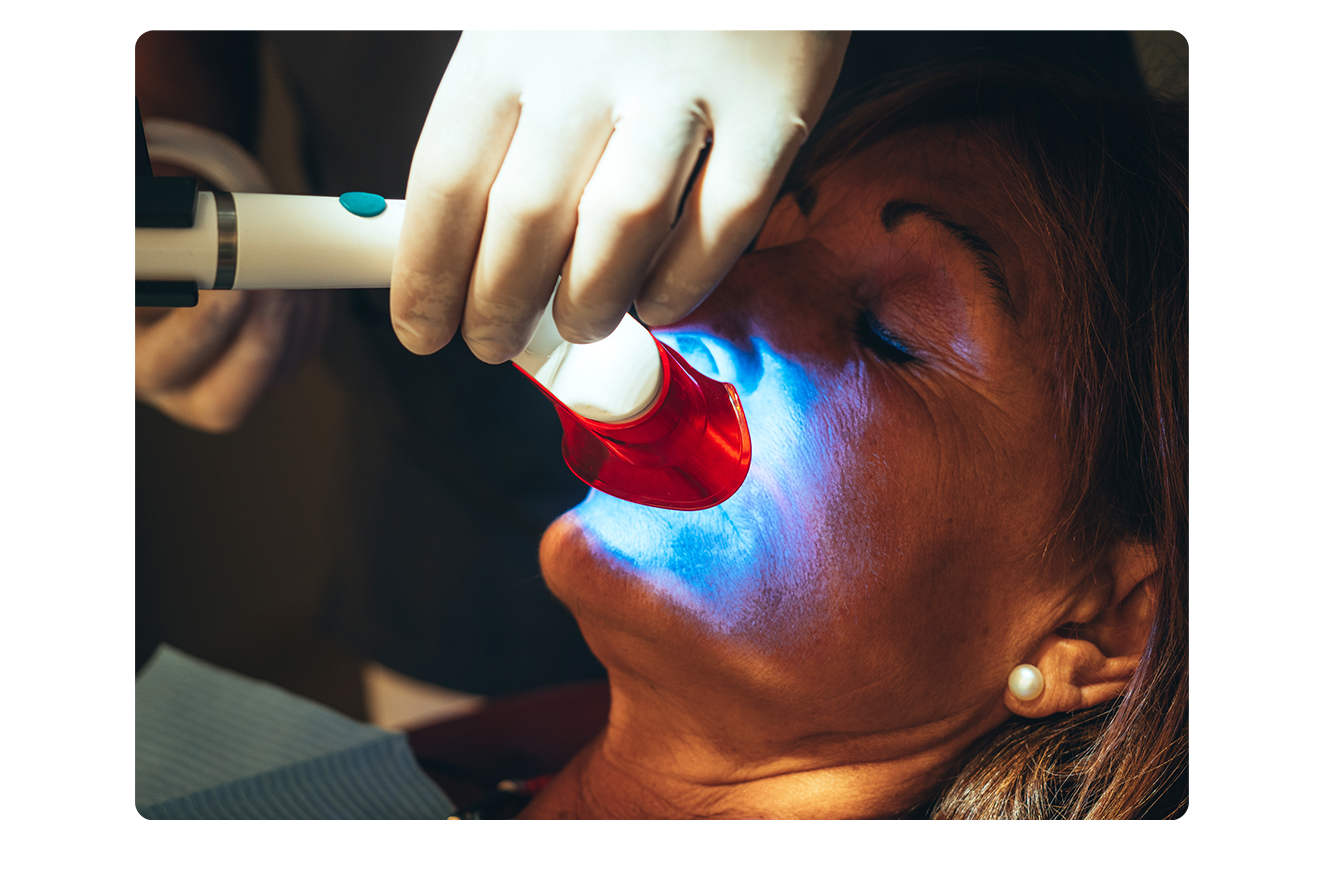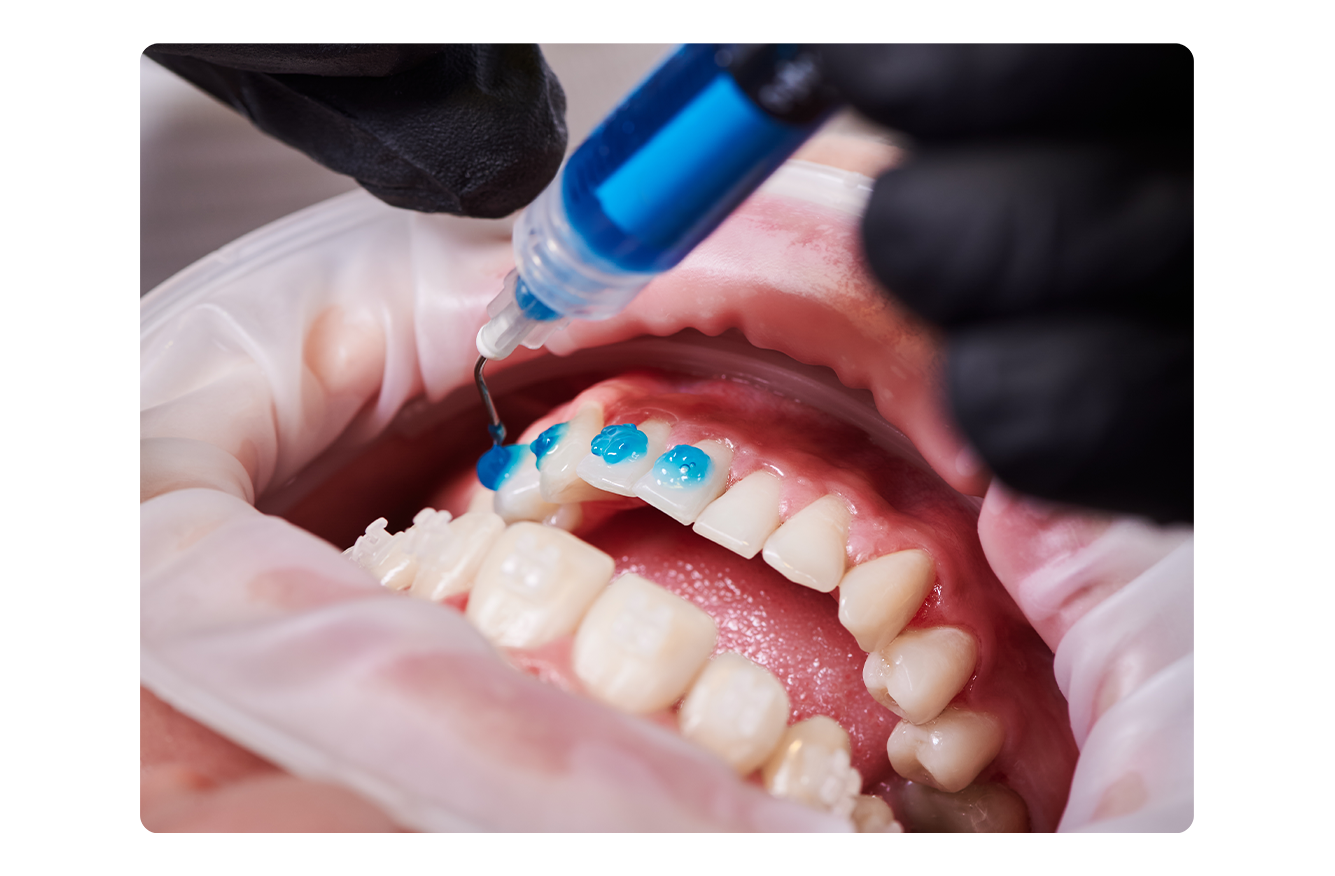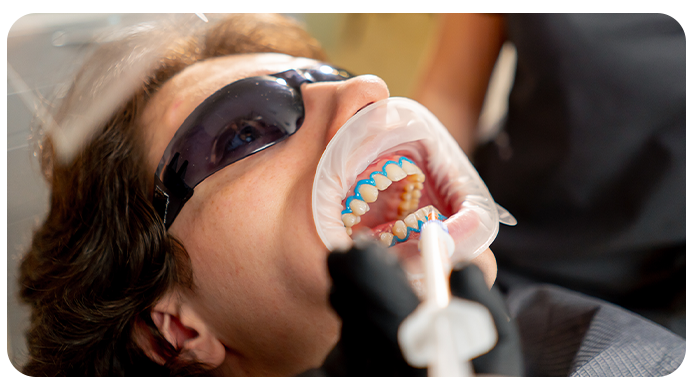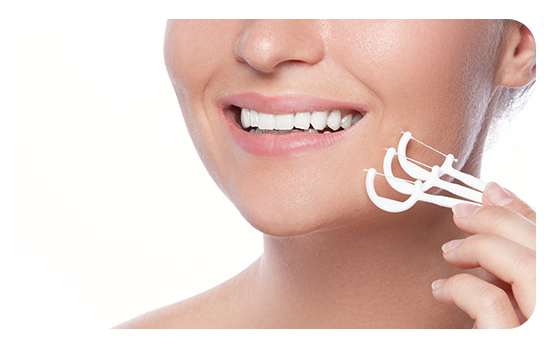Teeth Whitening
Teeth whitening is a commonly preferred treatment in aesthetic dentistry. This procedure, designed to lighten the color of your teeth, remove stains, and achieve a brighter smile, provides safe and effective results when done with the right techniques. Here is detailed information about teeth whitening methods, their effects, and important considerations.
1. Teeth Whitening Methods
- Office-Type Whitening: A professional whitening procedure performed by a dentist in a clinical setting. High-concentration whitening agents are used to achieve quick and effective results.
- At-Home Whitening: A method where custom-made trays and whitening gels are provided by the dentist to be used at home. Regular use for the recommended duration yields successful results.
- Combined Teeth Whitening: A method that starts the whitening process in the clinic and continues with special gels and trays used at home. It provides more permanent and effective results.


2. Effects of Teeth Whitening
2. Effects of Teeth Whitening
- Whiter Teeth: The primary effect of teeth whitening is the visible lightening of the teeth, resulting in a brighter, more attractive smile.
- Improved Confidence: A brighter smile can boost self-esteem and improve confidence, especially in social or professional settings.
- Even Color Distribution: Teeth whitening helps in achieving a more uniform color across the teeth, correcting discoloration and uneven shades.
- Non-invasive Procedure: Teeth whitening is a safe and non-invasive method, providing visible results without the need for surgery or extensive procedures.
- Temporary Tooth Sensitivity: Some people may experience mild sensitivity to hot or cold foods and drinks after the procedure, which usually resolves within a short period.
- Potential Gum Irritation: In some cases, whitening agents may cause mild irritation to the gums, but this effect is typically temporary and resolves after treatment.
- Long-Lasting Brightness: Professional whitening treatments provide long-lasting brightness. However, regular maintenance and proper eating habits are needed to preserve the whiteness of your teeth.
- Safety: Whitening procedures performed under the supervision of a dentist are generally safe. When the correct techniques and dosages are used, they do not damage the tooth enamel.
- Sensitivity: Some individuals may experience temporary sensitivity after whitening procedures. This usually subsides within a few days and can be controlled using sensitivity-reducing toothpaste.
3. Key Considerations
3. Maintaining Your Whitened Smile
- Whitening Toothpaste and Mouthwashes: Whitening toothpaste and mouthwashes can be part of your daily oral care routine. However, excessive use can cause wear on the enamel, so it should be used with caution.
- Smoking and Caffeine Consumption: Smoking and excessive consumption of coffee, tea, and other dark beverages can cause staining on teeth. Reducing or quitting these habits after whitening helps maintain the whiteness of your teeth.
- Regular Dental Checkups: Regular dental visits are important for the effective and safe results of teeth whitening procedures. Your dentist can determine the most suitable whitening method based on individual needs.


4. Post-Whitening Care
4. Maintaining Your Whitened Smile
- Cleaning Your Teeth: After whitening, regular brushing and flossing help prevent new stains from forming. Toothpaste containing fluoride can strengthen tooth enamel.
- Use of Whitening Products: Whitening toothpastes and mouthwashes may be used. However, it’s important to avoid overuse, as it could harm dental health.
- Preventing Stains: Limiting the intake of staining beverages such as red wine, coffee, and tea is advisable. Also, it’s recommended to avoid smoking.
Say Hello to a Bright Smile with LHC Clinic
At LHC Clinic, we provide professional teeth whitening services to help you achieve a healthy and aesthetic smile. Our expert dentists and advanced technology ensure safe and effective whitening treatments. Choose LHC Clinic for a brighter smile!
Remember, healthy and white teeth are the key to a beautiful smile! ✨

Sıkça Sorulan Sorular
Proper care after extraction helps prevent complications:
• Keep the gauze pad in place and bite down gently to stop bleeding
• Avoid spitting, rinsing forcefully, or using straws for the first 24 hours• Refrain from smoking as it hinders healing
• Eat soft, cool foods and avoid the extraction site while brushing
Sticking to these precautions promotes healing and prevents conditions like dry socket.
A healthy smile starts with a disciplined oral care routine. This routine should include:
• Brushing twice daily with a soft-bristled toothbrush and fluoride toothpaste
• Flossing once a day to remove plaque and food debris between teeth• Rinsing with an antibacterial mouthwash for added freshness and protection against
plaque
• Replacing your toothbrush every 3 months or sooner if the bristles are worn
Additionally, limiting sugary snacks and acidic drinks, staying hydrated, and attending
regular dental check-ups contribute to long-term oral health.
Facts:
• Frequent sugar intake feeds bacteria in the mouth, producing acids that erode enamel
• Even natural sugars can contribute to decay if oral hygiene is poor
Myths:
• Only candy causes cavities—actually, starchy foods and sweetened drinks can be just
as harmful
• Brushing right after eating sweets prevents cavities—it's better to wait 30 minutes to
avoid brushing softened enamel
Zirconium crowns are durable, metal-free dental restorations made from zirconia, known
for:
• Exceptional strength and resistance to fractures
• Biocompatibility, reducing the risk of allergic reactions
• Natural-looking aesthetics due to their tooth-like translucency
• Longevity with proper oral care
These crowns are widely used for both front and back teeth, offering a combination of
aesthetics and durability.
Diastema is the space between two teeth, commonly affecting the upper front teeth.
Treatment options include:
• Composite bonding for quick aesthetic correction
• Porcelain laminates for larger gaps
The best approach depends on the size of the gap, aesthetic goals, and oral health status.
